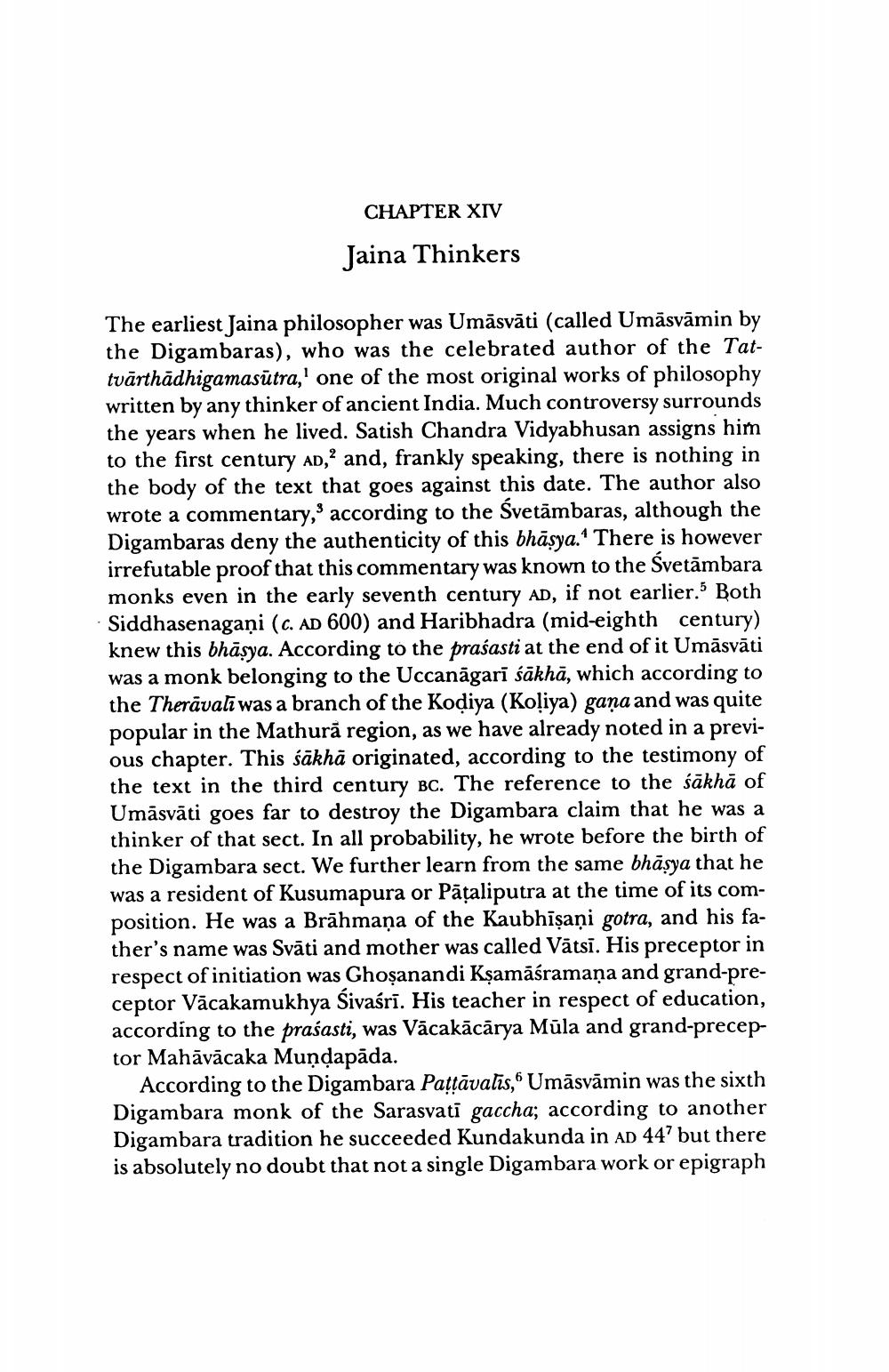________________
CHAPTER XIV
Jaina Thinkers
The earliest Jaina philosopher was Umāsvāti (called Umāsvāmin by the Digambaras), who was the celebrated author of the Tattvārthadhigamasutra,' one of the most original works of philosophy written by any thinker of ancient India. Much controversy surrounds the years when he lived. Satish Chandra Vidyabhusan assigns him to the first century AD, and, frankly speaking, there is nothing in the body of the text that goes against this date. The author also wrote a commentary, according to the Svetāmbaras, although the Digambaras deny the authenticity of this bhāsya.* There is however irrefutable proof that this commentary was known to the Svetāmbara monks even in the early seventh century AD, if not earlier.5 Both Siddhasenagani (C. AD 600) and Haribhadra (mid-eighth century) knew this bhāsya. According to the praśasti at the end of it Umāsvāti was a monk belonging to the Uccanāgarī sākha, which according to the Therävalī was a branch of the Kodiya (Koliya) gana and was quite popular in the Mathură region, as we have already noted in a previous chapter. This sākhā originated, according to the testimony of the text in the third century BC. The reference to the sākhā of Umāsvāti goes far to destroy the Digambara claim that he was a thinker of that sect. In all probability, he wrote before the birth of the Digambara sect. We further learn from the same bhāsya that he was a resident of Kusumapura or Pāțaliputra at the time of its composition. He was a Brāhmaṇa of the Kaubhīşaņi gotra, and his father's name was Svāti and mother was called Vätsi. His preceptor in respect of initiation was Ghoşanandi Kșamāśramaņa and grand-preceptor Vācakamukhya Śivaśrī. His teacher in respect of education, according to the praśasti, was Vācakācārya Mūla and grand-preceptor Mahāvācaka Mundapāda.
According to the Digambara Pattāvatīs, Umāsvāmin was the sixth Digambara monk of the Sarasvati gaccha, according to another Digambara tradition he succeeded Kundakunda in AD 44but there is absolutely no doubt that not a single Digambara work or epigraph




